Cyclists Hub is supported by its readers. We may receive a commission if you buy products using our links.All content on Cyclists Hub is written by humans, not robots. Learn More
These are the best gravel bikes under $5000 for racing and bike packing in all terrain types (ranging from smooth roads to rough gravel). To save you time, I selected them based on in-depth market research, user reviews, and discussions with avid gravel bikers. I then evaluated them based on my gravel bike scoring system.
The detailed buyer’s guide below also explains what to expect in the $5000 price range and much more! Let’s dive in.
What Are the Best Gravel Bikes Under $5000?
The best gravel bikes under $5,000 have carbon frames and specific gravel groupsets (1X or 2X), like the Shimano GRX or SRAM Rival.
They have hydraulic disc brakes and are often compatible with accessories thanks to additional mounting points.
You should choose your bike based on the terrain you want to ride and your riding style. Prefer a more relaxed geometry for long rides and a more aggressive one for racing.
Consider whether the tire clearance is wide enough for the tires you’ll need on your favorite terrain.
Read the How to choose a gravel bike guide for more details.
Salsa Cutthroat C GRX 810 2X (Best MTB-Like)

Comfort 5/5 | Handling 5/5 | Components 4/5 | Build Quality 5/5 | Accessories Compatibility 5/5 | Weight 1/5 | Design 3/5 | WEIGHTED OVERALL SCORE 4.1/5
Main Features
- Hydraulic disc brakes (learn more)
- Additional mounts for racks, bottles, etc.
- Down tube protection
- Partially internal cable routing
Technical Specifications
- Frame material: Carbon
- Weight: 24.25 lb (11 kg)
- Groupset: Shimano GRX RX810 2×11spd (11-34T)
- Wheel size: 700c
- Tire clearance: 2.4 in
- Tires: Teravail Sparwood 29×2.2″, 60 tpi, tubeless compatible
Salsa is a well-established brand in the gravel and MTB bike market. Their gravel bike range includes several lines (Cutthroat, Warbird, Warroad, etc.).
They differ in the use they are designed for (Warbird – gravel racing, Warroad – endurance road bike). Cutthroat is suitable for more challenging terrain and long trips.
With some exaggeration, one could say it is an MTB bike with drop bars.
This is mainly due to the wide tires and wide tire clearance, which allow you to fit up to 2.4-inch tires.
Its geometry is more relaxed and similar to that of mountain bikes, making it perfect for longer rides, bikepacking, and other adventures. It can easily handle singletracks, trails, and technical terrain.
The different Cutthroat models differ from each other, especially in the groupset. The GRX 810 2X can be classified as mid-range. I am sure you will appreciate its wide gear range.
It has many mounting points for additional accessories such as racks, panniers, bottle cages, etc.
Will this be your new bike?
Also available at mikesbikes.com
Cannondale Topstone Carbon 2 L & Lefty (Best with Suspension)
Comfort 5/5 | Handling 5/5 | Components 4/5 | Build Quality 5/5 | Accessories Compatibility 5/5 | Weight 2/5 | Design 3/5 | WEIGHTED OVERALL SCORE 4.2/5
Main Features
- Hydraulic disc brakes (learn more)
- Additional mounts for racks, bottle cages, etc.
- Down tube protection
- Front and rear lights included (L)
- Front (L) and rear suspension (Lefty)
- Partially internal cable routing
Technical Specifications
- Frame material: Carbon
- Weight: 23 lb (10.43 kg)
- Groupset: Shimano GRX RX800 2×11spd
- Wheel size: 700c
- Tire clearance: 45mm (700c), 2.1″ (650b)
- Tires: WTB Riddler TCS Light, 700 x 45c, tubeless ready
Topstone gravel bikes are a little different from other bikes in that they have a rear suspension called Kingpin, providing a higher level of comfort.
The difference between the L and the Lefty is that the Lefty also has a suspended front fork (known mainly from Cannondale mountain bikes) and a suspended seatpost. Thus, it is more suitable for more challenging terrain, like singletracks, etc. But it doesn’t have the SmartSense light system.
These features, coupled with the wide tires, make the Topstone a comfortable off-road gravel bike with which you’ll have a lot of fun.
Cannondale has also thought about practicality with the Topstone 2 L. It comes with a battery-powered front and rear light. For an additional cost, it also has a rear radar (Garmin Varia).
Although the SmartSense system may not suit everyone, it is a useful addition from my point of view. It’s a shame that the battery life is quite low (5 hours) relative to its size.
Trek Checkpoint SL 6 eTap (Best for Fast-Paced Riding)
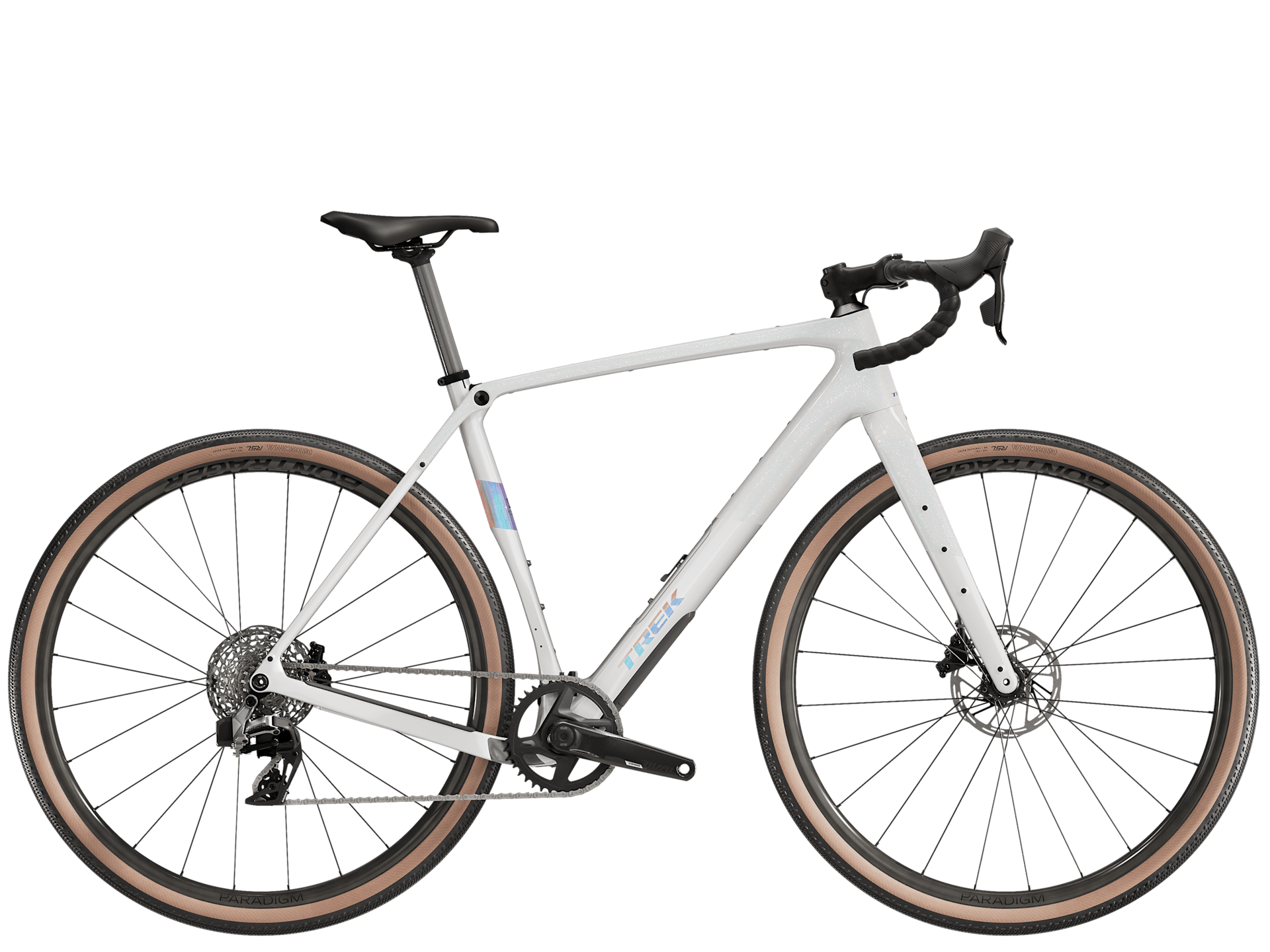
Comfort 4/5 | Handling 5/5 | Components 4/5 | Build Quality 5/5 | Accessories Compatibility 5/5 | Weight 3/5 | Design 5/5 | WEIGHTED OVERALL SCORE 4.4/5
Main Features
- Hydraulic disc brakes (learn more)
- IsoSpeed decoupler
- Sleek design
- Additional mounts for racks, bottle cages, etc.
- Internal storage compartment
- Down tube protection
- Fully-internal cable routing
Technical Specifications
- Frame material: Carbon
- Weight: 20 lb (9.05 kg)
- Groupset: SRAM Rival eTap AXS 1×12spd
- Wheel size: 700c
- Tire clearance: 45mm (700c), 2.1″ (650b)
- Tires: Bontrager GR1 Team Issue, Tubeless Ready, 120 tpi, 700x40c
The Checkpoint is Trek’s gravel bike line. It’s similar to the Domane road bikes but has much wider tire clearance and different geometry. You can read my Domane vs. Checkpoint comparison for more info.
Individual Checkpoints differ in components (marked with a different number) and frame material. SL uses 500 series OCLV carbon, while SLR uses 700 OCLV carbon (better).
One of the things you’ll immediately notice about Checkpoint is its sleekness and cleanliness. This is due to the internal cabling because the SRAM Rivel eTap is a wireless electronic groupset.
The Checkpoint also has the IsoSpeed decoupler we know from Trek road bikes. It absorbs vibrations and road bumps, making your ride more comfortable.
Don’t forget that the Checkpoint has a fairly aggressive geometry, making it an ideal race machine for performance-oriented riders.
One last thing I want to highlight is the internal storage compartment, where you can store small things like a multitool or tire patch kit.
Ibis Hakka Rival
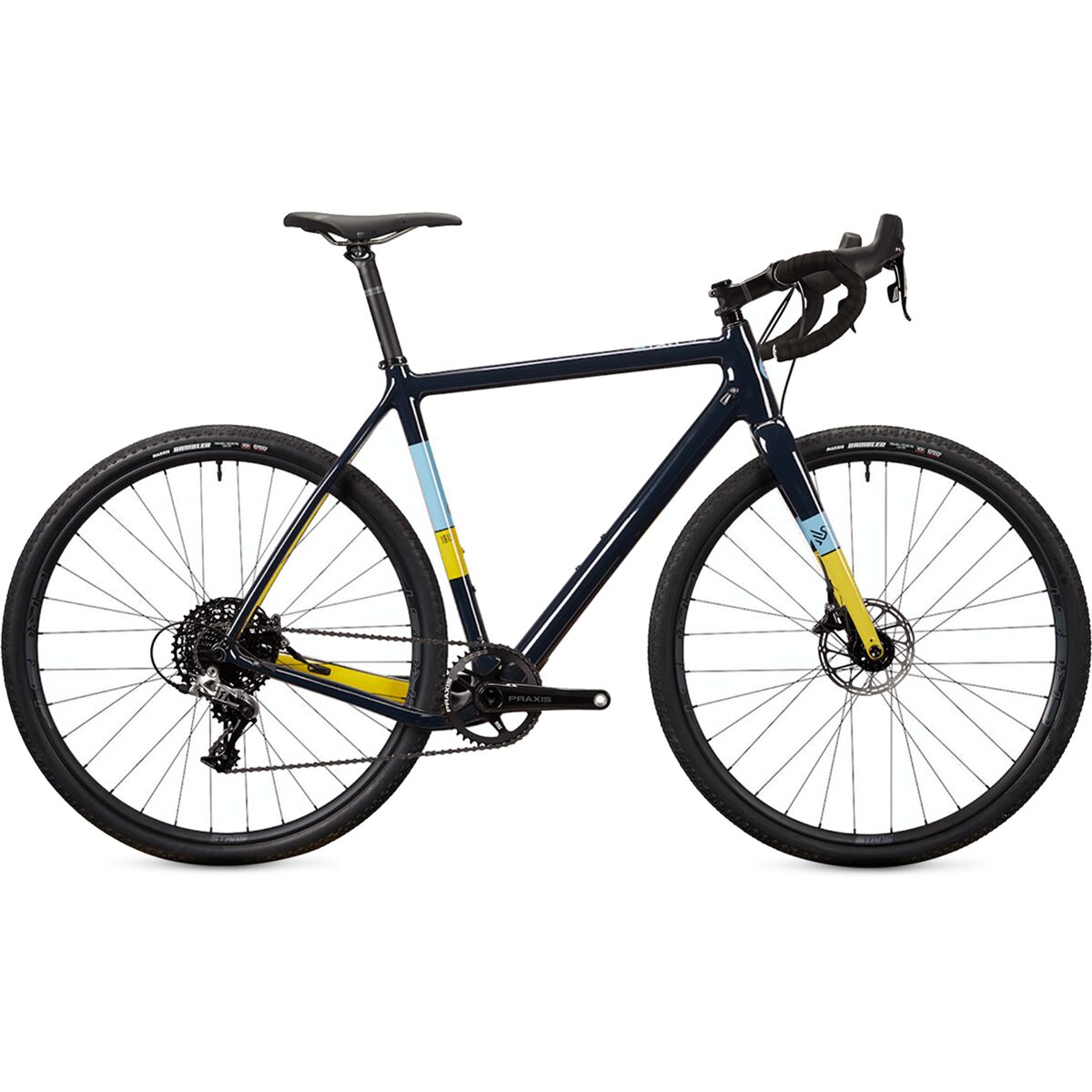
Comfort 4/5 | Handling 4/5 | Components 4/5 | Build Quality 4/5 | Accessories Compatibility 2/5 | Weight 4/5 | Design 3/5 | WEIGHTED OVERALL SCORE 3.7/5
Main Features
- Hydraulic disc brakes (learn more)
- Low weight
- Partially internal cable routing
Technical Specifications
- Frame material: Carbon
- Weight: 18.8 lb (8.53 kg)
- Groupset: SRAM Rival 1×12spd
- Wheel size: 700c
- Tire clearance: 40mm (700c), 2.1″ (650b)
- Tires: Maxxis Rambler EXO, 700c x 40mm
Although Ibis is known more in the MTB world, their Hakka MX gravel bike is worth including. This is mainly thanks to its lightweight and versatility.
You can think of it as a road bike suitable for fast road and off-road riding. Compared to MTB-like gravel bikes, you get into a more aerodynamic riding position where you can ride faster without compromising comfort.
It features an SRAM Rival 1×12 drivetrain with a wide gear range to tackle any climb. You won’t have to carry extra pounds thanks to the low weight. The Hakka MX weighs a respectable 18.8 lb (8.53 kg)!
Its hydraulic disc brakes offer reliable stopping power in all conditions, while the large tire clearance allows you to use up to 40mm wide tires.
So, the Ibis Hakka MX is worth considering whether you want to explore new trails or push your limits on your favorite gravel roads.
Cervélo Aspero GRX

Comfort 4/5 | Handling 4/5 | Components 4/5 | Build Quality 5/5 | Accessories Compatibility 2/5 | Weight 4/5 | Design 3/5 | WEIGHTED OVERALL SCORE 3.8/5
Main Features
- Hydraulic disc brakes (learn more)
- Down tube protection
- Beautiful finish
- Limited additional mounting points
- Partially internal cable routing
Technical Specifications
- Frame material: Carbon
- Weight: n/a
- Groupset: Shimano GRX 810 2×11spd
- Wheel size: 700c
- Tire clearance: 42mm (700c), 49mm (650b)
- Tires: Panaracer Gravel King SK Folding 700x38mm
Cervélo Aspero GRX can be an alternative for those who don’t like Trek Checkpoint or Ibis Hakka.
The Aspero is a similarly tuned bike with one significant difference. It has a 2X drivetrain with similar gearing to what we know from road bikes.
These make it the ideal gravel bike for long trips or racing over not-too-challenging terrain.
Of course, with wider tires, it can handle steeper hills off-road. They’ll just require more power.
The main disadvantage of the Aspero is the limited mounting points, such as for bags or bottle cages. It is, therefore, not ideal for bikepackers and people who can’t live without them.
Also available at competitivecyclist.com
Cannondale SuperSix Evo CX
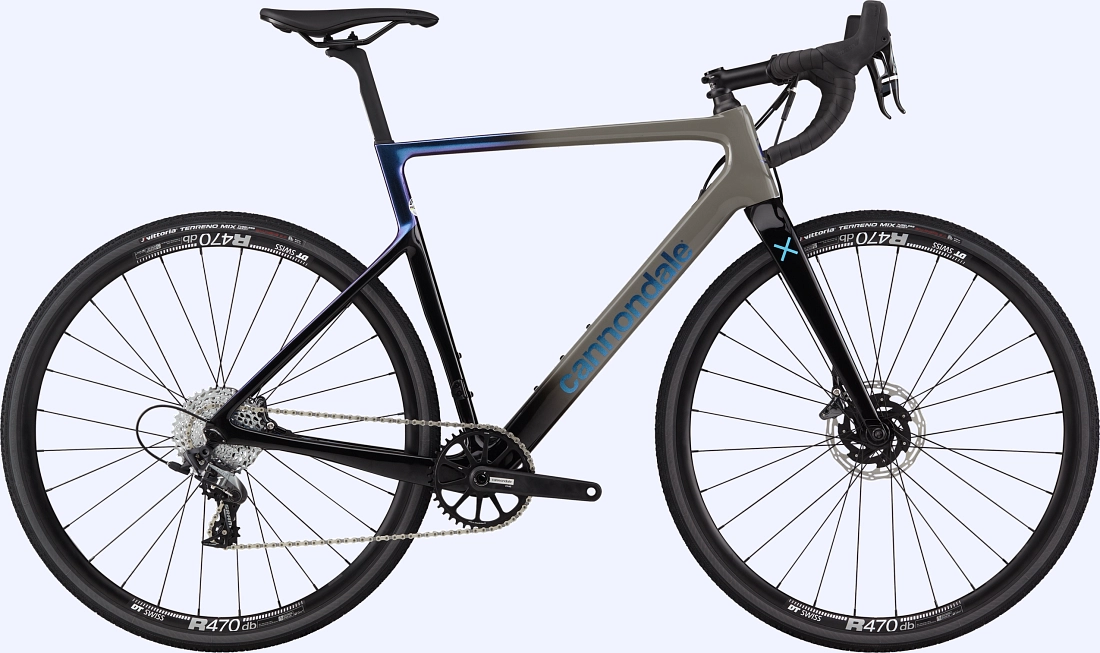
Comfort 3/5 | Handling 4/5 | Components 4/5 | Build Quality 5/5 | Accessories Compatibility 2/5 | Weight 4/5 | Design 3/5 | WEIGHTED OVERALL SCORE 3.6/5
Main Features
- Hydraulic disc brakes (learn more)
- Designed for cyclo-cross
- Low weight
- Unique, chameleon finish
- Partially internal cable routing
Technical Specifications
- Frame material: Carbon
- Weight: 18.1 lb (8.21 kg)
- Groupset: SRAM Force 1×11spd
- Wheel size: 700c
- Tire clearance: 45mm (700c)
- Tires: Vittoria Terreno Mix TNT, 700 x 33c, tubeless ready
The Cannondale SuperSix Evo CX differs from the other bikes in this review mainly because of its purpose. It was designed (based on its road counterpart) for cyclocross, not gravel riding.
However, that doesn’t stop you from using it for gravel racing and fast-paced rides, for example.
So, how does it differ? Basically, almost none from the above Trek Checkpoint, Ibis Hakka, or Cervélo Aspero.
However, I can mention, for example, the somewhat narrower maximum tire clearance, low weight, and lack of down tube protector.
With the SuperSix Evo, you can look forward to agility, responsiveness, and fun.
Given its price, it doesn’t have the best wheels (or widest tires), but you can always upgrade them later, for example, with these quality Chinese gravel bike wheels.
Niner RLT RDO 4-Star

Comfort 5/5 | Handling 4/5 | Components 4/5 | Build Quality 4/5 | Accessories Compatibility 5/5 | Weight 3/5 | Design 3/5 | WEIGHTED OVERALL SCORE 4.1/5
Main Features
- Hydraulic disc brakes (learn more)
- Additional mounts for racks, bottle cages, etc.
- High attention to detail
- Partially internal cable routing
Technical Specifications
- Frame material: Carbon
- Weight: 21.3 lb (9.66 kg)
- Groupset: Shimano GRX RX800 1×11spd
- Wheel size: 700c
- Tire clearance: 50mm (700c), 2.0″ (650b)
- Tires: Schwalbe G-One Allround EVO Super Terrain, TLR, ADDIX 700x45mm
Niner offers a wide range of gravel bikes. From the more affordable aluminum or steel to carbon and full suspension ones.
The RLT RDO 4-Star is a compromise—a golden middle ground. It’s a versatile gravel bike for multiple uses.
It is suitable for bikepacking thanks to the additional mounts for racks and bottle cages.
Its gear range is limited, and the jumps between gears are larger. However, the gear ratios are suitable for flat sections or descents.
By the way, Niner RLT RDO also comes with other groupsets, including 2×11(12)spd (both SRAM and Shimano).
Of course, the wide tire clearance allows you to put on wide tires and explore uncharted terrain.
Giant Revolt Advanced 0

Comfort 4/5 | Handling 4/5 | Components 5/5 | Build Quality 5/5 | Accessories Compatibility 5/5 | Weight 4/5 | Design 3/5 | WEIGHTED OVERALL SCORE 4.3/5
Main Features
- Hydraulic disc brakes (learn more)
- Clean aesthetics
- Additional mounts for racks, bottle cages, etc.
- Flip-chip feature for adjusting the wheelbase
- Partially internal cable routing
Technical Specifications
- Frame material: Carbon
- Weight: 19.3 (8.76 kg)
- Groupset: Shimano GRX RX810 1×11spd
- Wheel size: 700c
- Tire clearance: 53mm (700c)
- Tires: Maxxis Receptor, 700x40c, tubeless
Giant is one of the largest bicycle manufacturers in the world. So, it’s no surprise they are also represented among gravel bikes.
Their Revolt range is very similar to the Defy endurance road bikes. However, it has much wider tire clearance and is designed for off-road use.
Giant’s Flip-chip dropout is definitely worth mentioning. It allows you to adjust the wheelbase length and, therefore, how the bike behaves quite easily and quickly.
In the short position, the steering is more agile, ideal for mixed terrain. On the other hand, the long position is good for more stability in more demanding terrain.
You’ll also appreciate the bike’s overall low weight and the D-Fuse seatpost, which springs to absorb vibrations.
The handlebars are also made to flex slightly to increase your riding comfort.
Canyon Grizl CF SLX 8 Di2
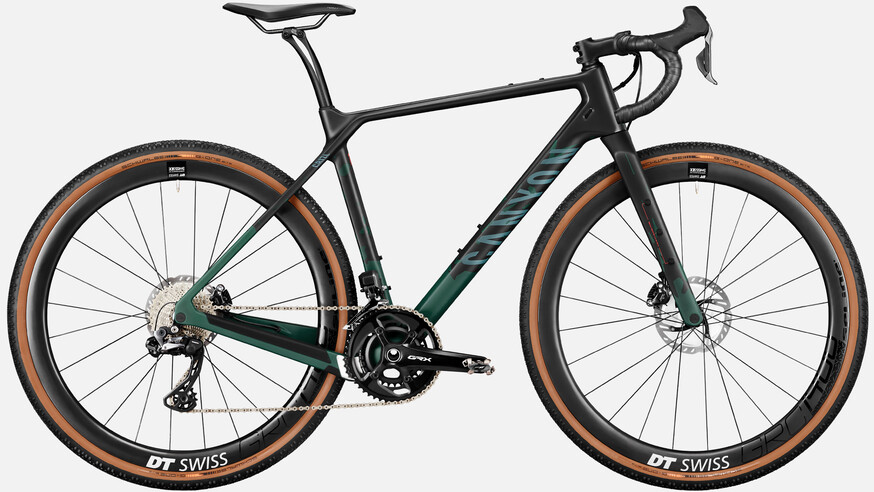
Comfort 4/5 | Handling 4/5 | Components 5/5 | Build Quality 5/5 | Accessories Compatibility 5/5 | Weight 4/5 | Design 3/5 | WEIGHTED OVERALL SCORE 4.3/5
Main Features
- Hydraulic disc brakes (learn more)
- VCLS seatpost for increased comfort
- Deeper carbon wheels
- Additional mounts for racks, bottle cages, etc.
- Electronic shifting
- Partially internal cable routing
Technical Specifications
- Frame material: Carbon
- Weight: 19.18 lb (8.70 kg)
- Groupset: Shimano GRX Di2 RX815 2×11spd
- Wheel size: 700c
- Tire clearance: 50mm (700c)
- Tires: Schwalbe G-One Bite 45mm
This list would not be complete without Canyon Grizl or Grail. These two gravel bike lines are similar. What’s the difference?
The Grail uses a double-decker handlebar, a thorn in the side of some and loved by others.
So, I decided to include the Grizl, which is more off-road focused, has wider tire clearance, and more mounting points.
As is well known with Canyon, because of the direct-to-consumer model, they can offer better products at the same or lower prices than the competition.
The Grizl CF SLX 8 Di2 is the only gravel bike on this list with Shimano electronic shifting. From my experience, it’s a great feature: Shifting is faster and more convenient.
Also of note on this bike are the carbon wheels with deeper rims for better aerodynamics and the VCLS patented seatpost for improved ride comfort.
Unfortunately, Canyon bikes are in high demand and often sell out or have lead times in the months.
| Bike | Type | Weight | Groupset | Tires | Tire Clearance | Buy | Comfort | Handling | Components | Build Quality | Accessories Compatibility | Weight | Design | Weighted |
|---|---|---|---|---|---|---|---|---|---|---|---|---|---|---|
| Salsa Cutthroat C GRX 810 2X | MTB-like | 24.25 lb (11 kg) | Shimano GRX RX810 2×11spd | 700×2.2″ | 2.4 in | Check Price | 5 | 5 | 4 | 5 | 5 | 1 | 3 | 4.1 |
| Cannondale Topstone Carbon 2 L | MTB-like | 23 lb (10.43 kg) | Shimano GRX RX800 2×11spd | 700x45c | 45mm (700c) 2.1″ (650b) | Check Price | 5 | 5 | 4 | 5 | 5 | 2 | 3 | 4.2 |
| Cannondale Topstone Carbon 2 Lefty | MTB-like | 23 lb (10.43 kg) | Shimano GRX RX800 2×11spd | 700x44c | 45mm (700c) 2.1″ (650b) | Check Price | 5 | 5 | 4 | 5 | 5 | 2 | 3 | 4.2 |
| Trek Checkpoint SL 6 eTap | Standard gravel bike | 20 lb (9.05 kg) | SRAM Rival 1×12spd | 700x40c | 45mm (700c) 2.1″ (650b) | Check Price | 4 | 5 | 4 | 5 | 5 | 3 | 5 | 4.4 |
| Ibis Hakka Rival | Standard gravel bike | 18.8 lb (8.53 kg) | SRAM Rival 1×12spd | 700x40c | 40mm (700c) 2.1″ (650b) | Check Price | 4 | 4 | 4 | 4 | 2 | 4 | 3 | 3.7 |
| Cervélo Aspero GRX | All-road | n/a | Shimano GRX 810 2×11spd | 700x38c | 42mm (700c) 49mm (650b) | Check Price Check Price | 4 | 4 | 4 | 5 | 2 | 4 | 3 | 3.8 |
| Cannondale SuperSix Evo CX | Cyclo-cross/all-road | 18.1 lb (8.21 kg) | SRAM Force 1×11spd | 700x33c | 45mm (700c) | Check Price | 3 | 4 | 4 | 5 | 2 | 4 | 3 | 3.6 |
| Niner RLT RDO 4-Star | Standard gravel bike | 21.3 lb (9.66 kg) | Shimano GRX RX800 1×11spd | 700x45c | 50mm (700c) 2.0″ (650b) | Check Price | 5 | 4 | 4 | 4 | 5 | 3 | 3 | 4.1 |
| Giant Revolt Advanced 0 | Standard gravel bike | 19.3 (8.76 kg) | Shimano GRX RX810 1×11spd | 700x40c | 53mm (700c) | Check Price | 4 | 4 | 5 | 5 | 5 | 4 | 3 | 4.3 |
| Canyon Grizl CF SLX 8 Di2 | Standard gravel bike | 19.18 lb (8.70 kg) | Shimano GRX Di2 RX815 2×11spd | 700x45c | 50mm (700c) | Check Price | 4 | 5 | 5 | 5 | 5 | 4 | 4 | 4.6 |
My Verdict
The following three gravel bikes stand out from the rest:
Salsa Cutthroat C (also available at mikesbikes.com) is the best MTB-like gravel bike for under $5,000. That’s because of its relaxed geometry, wide tire clearance, down tube protector, and wide-gear range (Shimano GRX RX810 2×11spd groupset).
Cannondale Topstone Carbon 2 Lefty is the best gravel bike for under $5,000 with front and rear suspension. It uses the ‘Lefty’ fork known from Cannondale mountain bikes and also Kingpin rear suspension technology for a more comfortable ride.
Trek Checkpoint SL 6 eTap is the best gravel bike for under $5,000 for fast-paced riding. Besides its aerodynamic frame and sporty geometry, it also has fully integrated cable routing, reducing its aerodynamic drag. You will also appreciate its IsoSpeed decoupler for increased riding comfort.
How to Choose a Gravel Bike for Under $5000?
The following guide will help you understand what to expect from a sub-$5,000 gravel bike and what you should know when buying one.
It’s a shortened version of my fully dedicated guide on choosing a gravel bike.
Gravel Bike Type
All gravel bikes are not the same. They differ from each other in their geometry, wheel size, etc. There are 3 main categories of gravel/adventure bikes.

- All-Road gravel bikes have 700c wheels, narrow tires, and more aggressive, sporty geometry. They are perfect for paved & dirt road sections, maintaining your fitness level, gravel races, etc.
- Standard gravel bikes have slightly more relaxed geometry than All-Road gravel bikes and more mounting points for accessories. They are all about riding comfort and stability.
- MTB-like gravel bikes usually have slack geometry, wide tires, and fancy features like suspension. They are suitable for rough terrain.
NOTE: Many gravel bikes are compatible with 650b and 700c wheel sizes. Just make sure the bike offers wide enough tire clearance for wider tires.
You should choose the gravel bike type based on your riding style and the terrain you want to ride. Let me give you two examples.
If you enjoy fast-paced rides that combine tarmac and light terrain, you can buy an all-road gravel bike with racing geometry.
Or an MTB-like gravel bike with wide tires and suspension will allow you to tackle rough terrain, single trails, etc.
Frame Material
Gravel bikes under $5000 have carbon (hardly ever aluminum) frames. The pros and cons of these materials are the following:
- Carbon gravel bikes are stiff and light (they offer the highest stiff-to-weight ratio), but they are more expensive than aluminum gravel bikes.
- Aluminum gravel bikes are more affordable but heavier and softer. They also may fatigue and corrode over time.
Sources: ScienceDirect, SheldonBrown, CyclingWeekly
Visit my bike frame materials comparison for more info.
The following table summarizes the estimated bike weights based on frame material.
| Frame Material | Weight of the Gravel Bike |
|---|---|
| Carbon | 7.5–10 kg 16.5–22 lb |
| Aluminum | 9.5–12 kg 21–26.5 lb |
| Steel | 11–13.5 kg 24–30 lb |
Groupset
Gravel bikes for under $5000 use 1X or 2X mechanical or electronic groupsets.
1X shifting (1 chainring) offers fewer gears with larger jumps between them. These gravel bikes are ideal for quick changes in gradients.
These groupsets are also lighter and easier to maintain thanks to fewer parts and easier to get used to (you only shift the rear gears).
2X shifting (2 chainrings) offers a wider gear range, making them more suitable for longer rides, flats, and descents where you appreciate more gears.
Their downside is possible cross-chaining, higher weight, susceptibility to failure, and higher maintenance requirements due to more parts.
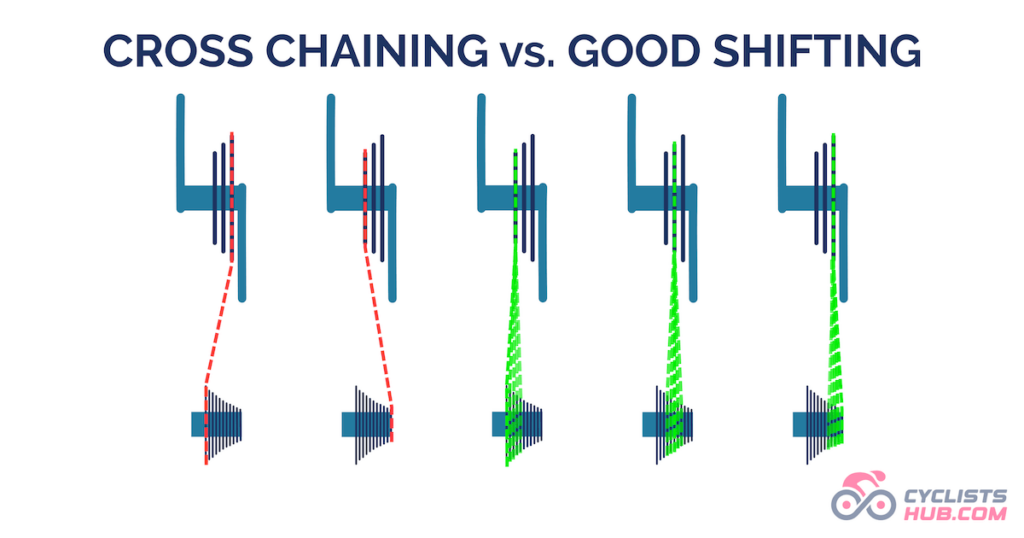
3X shifting (3 chainrings) is not used on gravel bikes at its price range. You may find it on budget gravel bikes.



Shimano and SRAM are among the most popular groupsets manufacturers for most bike types.
You can find gravel-specific or road groupsets on these bikes. Gravel-specific ones have different gear ratios, which are more suitable for off-road riding.
| Shimano | SRAM | Campagnolo | Type | |
|---|---|---|---|---|
| Entry level | GRX 10spd | Mechanical | ||
| Mid range | GRX 11spd | Force XPLR eTap* | Ekar | Mechanical |
| Pro | GRX Di2 11spd | RED XPLR eTap | Electronic |
*Force XPLR eTap is electronic.
Aim for Shimano GRX (Di2), SRAM Force XPLR, or SRAM Rival at this price range.
Some gravel bikes also have electronic groupsets (Di2, eTap), which are more convenient than mechanical ones. You can learn more in my mechanical vs. electronic shifting comparison.
Also, remember that the easier the gears you will need, the more teeth the cassette has to have. For example, a 10-36T cassette has harder gears than a 10-50T cassette.
Wheel Size
Most gravel bikes have 700c wheels; only those for rough terrain come with 650b wheels and wide, high-volume tires.

700c wheels have a larger diameter and narrower tires than 650b wheels. This makes them better for light terrain and paved surfaces like the tarmac because they allow you to ride faster without spending as much energy.
According to La Velocita, 700c wheels combine the best weight, grip, and rolling resistance ratio.
650b wheels have a smaller diameter and wider tires. This makes them suitable for rougher terrain, such as bumpy roads, mud, forest roads, single tracks, etc. In addition, the knobby tires ensure enough grip and adhesion.
Wider tires inflated to lower pressures better absorb bumps and other vibrations, making your ride more comfortable.
So, use 700c wheels with narrower tires for long-distance trips through lighter terrain and 650b wheels for more demanding terrain.
The following table should help you decide what tire width to choose.
| Grade | Definition | Suggested Tire Size |
|---|---|---|
| 1 | Tarmac, bad paved roads with cobbles | 700×25 – 700×32 |
| 2 | Dirt roads | 700×28 – 700×35 |
| 3 | Light gravel | 700×32 – 700×38 |
| 4 | Rough gravel | 700×35 – 700×40+ |
| 5 | MTB terrain | 700×38+ / 650b |
Source: cyclingtips.com
Brakes
Gravel bikes in this price range use hydraulic disc brakes. Below, I briefly explain the difference between hydraulic and mechanical ones.
- Hydraulic disc brakes use fluid filled in the system. As CyclingAbout explains, when you pull the brake lever, the fluid rushes down to the caliper, closing the brake pads. This type of disc brake provides braking consistency in any riding condition. On the other hand, they are more difficult to maintain at home due to their complexity.
- Mechanical disc brakes work similarly to rim brakes – a steel cable moves the pistons, creating friction that slows the bike. The advantage is that they are compatible with standard rim shifters and are easier to maintain at home. Their disadvantage is that the steel cable can wear out more easily and break when you don’t expect it.
Accessories Compatibility
If you are looking for a gravel bike for bike touring, make sure it is compatible with additional accessories thanks to the additional mounts.
They will allow you to equip the bike with panniers, bags, fenders, and water bottles to support you on your bike journeys.
Feel free to watch the following video by bikepacking.com. They explain what should be on your bikepacking gear list.
Bike Size and Geometry
It may be tricky to choose the bike size if you can’t try it in person, and geometry also plays a role.
Choosing the right size is important for your riding comfort and preventing injuries. So I recommend spending the necessary time choosing.
To find the right road bike size, feel free to:
- Consult the size with the retailer.
- Follow the How to choose a gravel bike size guide with a gravel bike size chart.
- Use this gravel bike size calculator.
Geometry-wise, things are a little more complicated. All-road gravel bikes will push you into a more aggressive position. In contrast, normal and MTB-like gravel bikes have more relaxed geometry, contributing to better riding comfort and stability.
Other Features to Consider
Some gravel bikes have front and rear suspensions. For example, a more compliant seat tube, an active rear suspension, or a suspended fork. These are more suitable for demanding terrain and improve riding comfort.
If you like rougher bike handling, I recommend choosing bikes with a downtube protector to maintain a longer frame life.
Gravel Bikes Under $5000 FAQ
This post is regularly updated to provide the most up-to-date product tips. If you find a product that is not up to date, please contact me.
Preview picture source: Canyon




